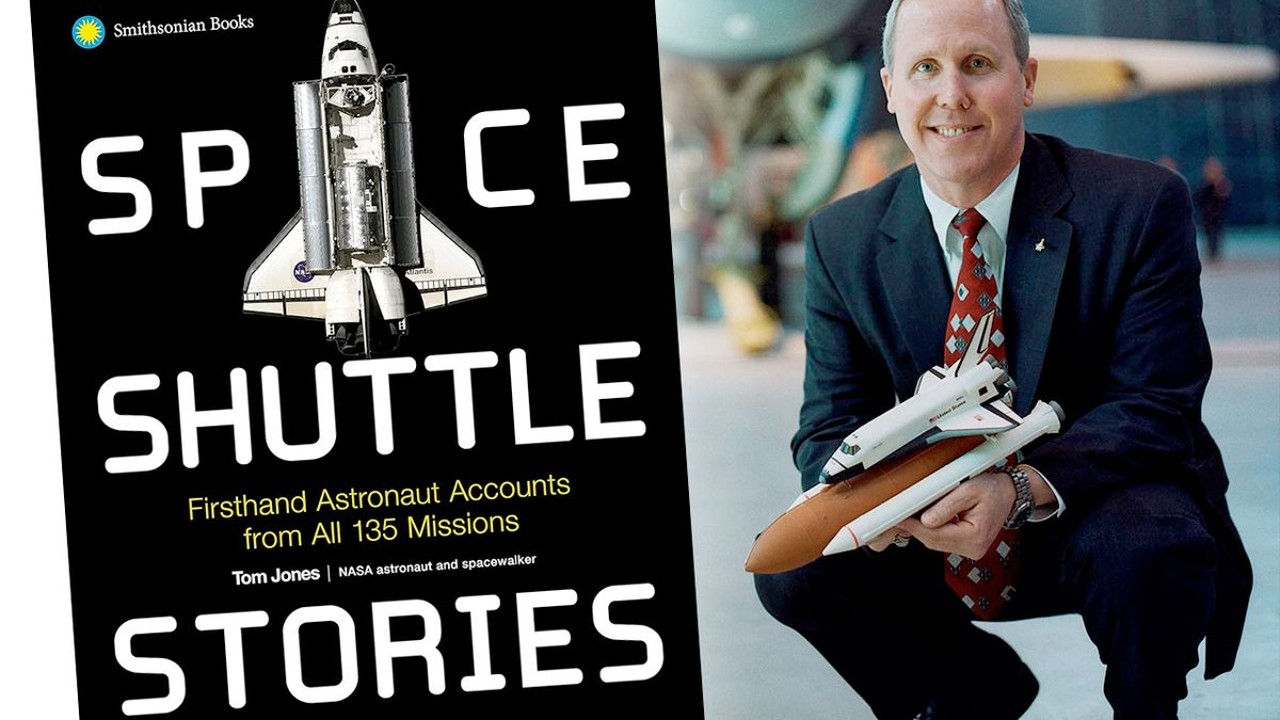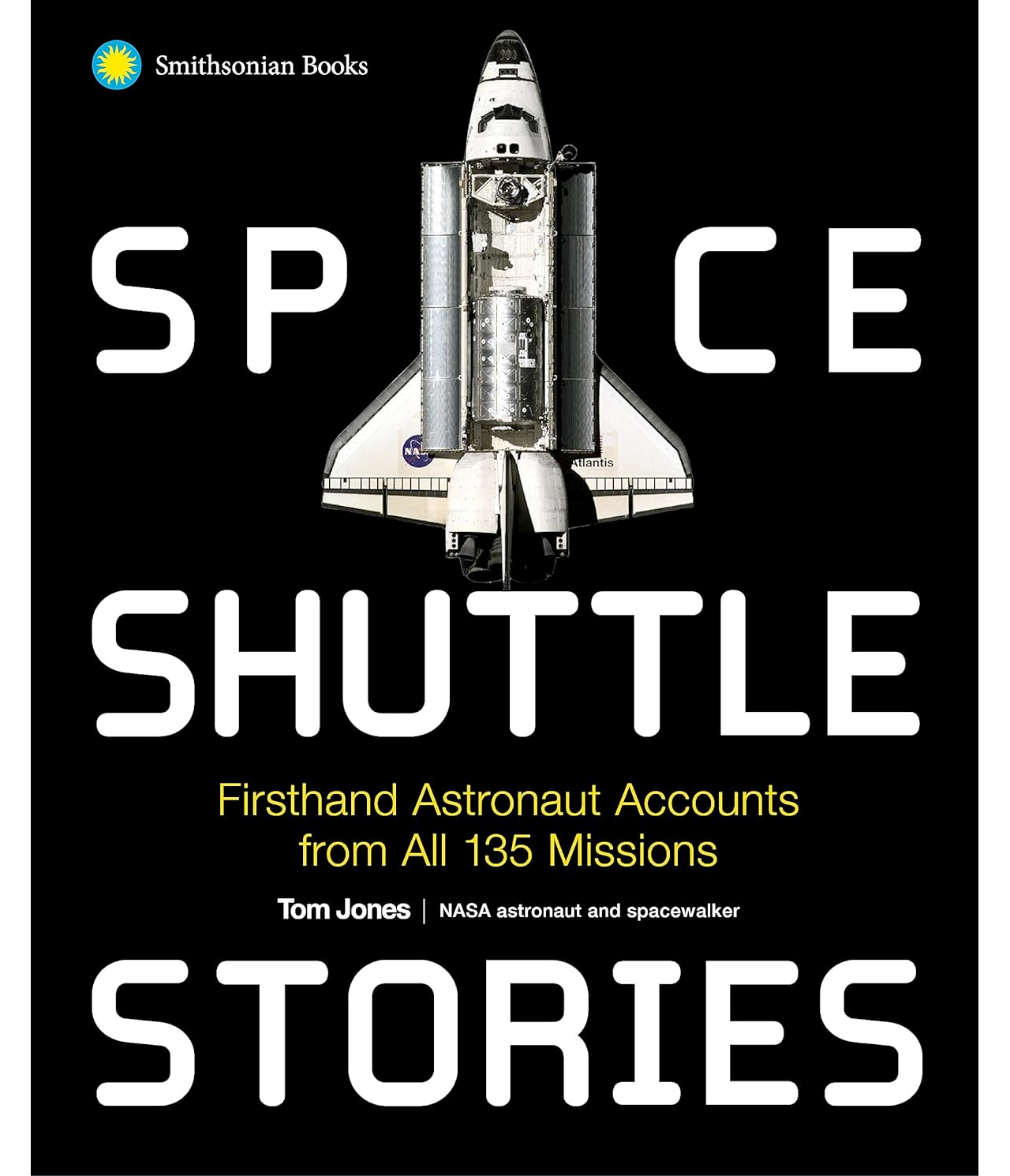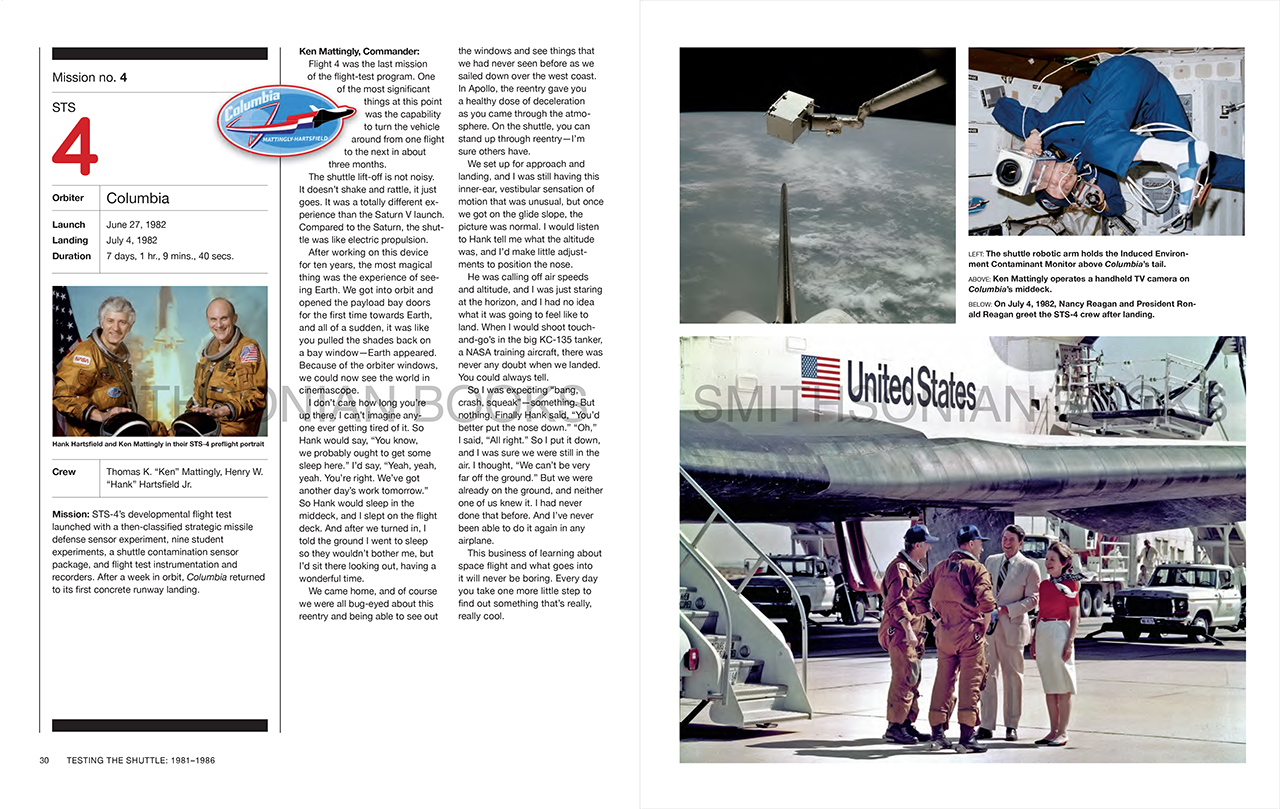Astronaut Tom Jones' new book gathers 'Space Shuttle Stories' from fellow fliers
'I knew there were a lot of stories to be told that had not been told in public.'

Tom Jones has his fair share of space shuttle stories to tell.
A veteran of four missions aboard the now-retired winged orbiters, Jones' NASA career was dedicated to the shuttle program, as he wrote about in a previously published memoir. His new book includes some of his stories as well, but adds significantly to them through the contributions of more than 130 fellow astronauts, at least one from each of the 135 space shuttle flights between 1981 and 2011.
"I knew there were a lot of stories to be told that had not been told in public," said Jones in an interview with collectSPACE.com. "Even as astronauts, we don't get to hear all the stories that our colleagues have, because we are so busy training or flying. You just don't have the chance to sit down and have a beer with 100 people to hear some of their secret or most favorite stories."
The pandemic, however, provided more than enough time for Jones to virtually connect with his crewmates and many others who flew on Columbia, Challenger, Discovery, Atlantis or Endeavour.
"I was able to do Zoom calls to get the ball rolling," said Jones. "It took about two and a half years to get all the interviews done."
Related: NASA's space shuttle program in pictures: A tribute

The result is "Space Shuttle Stories: Firsthand Astronaut Accounts from All 135 Missions," published by Smithsonian Books. In addition to a foreword by former space shuttle program manager Wayne Hale, "Space Shuttle Stories" devotes a couple of pages to each flight, pairing personal recollections with a gallery of more than 600 hand-picked photos.
collectSPACE spoke with Jones about "Space Shuttle Stories," how he brought together so many different astronauts' memories and why such a record is important for the future of space exploration. This interview has been edited for length and clarity.
collectSPACE (cS): Did you set out to talk to all 355 people who flew aboard the space shuttle, or what was your target number for the book?
Tom Jones: My goal was to talk to one person from every shuttle mission. I knew I couldn't talk to every person who had flown on the shuttle— that was just impossible, impractical. But I thought I could get one voice from every one of the 135 missions. That seemed something I could get my arms around, given enough time.
I just started at the beginning, STS-1, and started to ask for 45 minutes of people's time so I could get their stories down on paper. That was a delight because I never had a chance to talk one on one with so many interesting people.
cS: Other than those who have died, were there astronauts you wanted to talk to for the book but couldn't for whatever reason?
Jones: Out of the 130-plus interviews I did, there were certainly crew members where I tried to contact them and just was unable to reach them for an interview. They either declined or said they were too busy.
Take [shuttle pilot and commander] Pam Melroy, for example. She's a good friend, but she's [now] the deputy NASA administrator and I just could not carve 45 minutes out of her calendar to get her story. That's my fault, it's something I am sorry about, but of course there are other people on her shuttle missions who I could talk to. So rather than pull Pam away from something very important in her job, I talked to her colleagues, and that's how I solved that problem.
cS: In the book, it is noted that you used previously conducted oral histories or press interviews to include the voices of astronauts who died on the two space shuttle ill-fated missions, STS-51L on Challenger in 1986 and STS-107 on Columbia in 2003. Did you use the same approach for any other astronauts?
Jones: A good example of that is STS-4, which was Mattingly and Hartsfield. So, Hank Hartsfield's gone, but TK [Thomas Ken] Mattingly is still alive. He's an Apollo astronaut and then he flew on the shuttle. He's now of a certain age where he's not participating in interviews anymore. So I contacted him and got an answer, but he was reluctant to talk about STS-4 just because he's done it so many times before. I think he was just talked out.
So I was in a quandary for a few days, but then I thought of the Johnson Space Center oral history program. And sure enough, there's a nice long interview from TK about STS-4. The interview was conducted 20 years ago, but it is all public domain material, and I was able to tap into that so I could include at least one voice from that mission.
Related: Space shuttle Challenger and the disaster that changed NASA forever

cS: How did you decide when to insert your own voice? For example, for your first and last flights, STS-59 and STS-80, yours are the only accounts. For STS-80, you contributed only a brief anecdote and you did not add to the entry for STS-68. What drove those decisions?
Jones: It was my prerogative to structure the book the way I wanted to, and I thought I had some pretty good stories from both STS-59 on STS-98. I was a first-time flyer on STS-59 and I was quite excited by the whole experience of blasting off into orbit for the first time and getting to see Earth from the space radar lab perspective.
I thought I'd stick myself in a couple of the places, but I didn't want to dominate those four flights, and I wanted to give my other crewmates, who I'm good friends with, a chance to get their perspective on those flights into the book. So that's how I balanced that out. It wasn't because of a lack of participation from other crew members. I just wanted to insert myself in a little bit to tell my favorite stories on those two flights.
Get the Space.com Newsletter
Breaking space news, the latest updates on rocket launches, skywatching events and more!
cS: How many of the astronauts' stories in the book are ones that you hadn't heard before? How many do you think are appearing in print for the first time?
Jones: For me not hearing the stories, that was about 90%. These were people who I worked with and walked the hallways with and were in simulators with and flew jets with, but I just never had a chance to hear of their favorite experiences. So it was all brand new and very rewarding for me and a really fun exercise.
There are probably a couple of dozen people out of the 135 [who contributed to "Space Shuttle Stories"], who have written books or published articles where their stories have appeared before. I think the rest [of the accounts] are all new to printed material. There is no doubt that some of the stories have been told in public audiences, but I haven't been around for those, and I think the readers will really enjoy hearing some voices that they haven't been exposed to before.
cS: What does the astronaut-perspective capture that differs from what others who worked on the space shuttle program can share?
Jones: Others can talk to different facets of the shuttle program and human spaceflight — in particular, the mission controllers and flight directors about how they solve problems on the ground. Astronauts can share how those solutions were implemented, and the shuttle crew member voices provide a good spectrum of the reaction to problems or unexpected situations in space.
As we go forward, returning to the moon, going into deep space and establishing a presence off planet, I think that the kinds of problem solving techniques will be very useful. Everything that we know how to do well in space today, we learned on the space shuttle, so letting folks talk about their own problem solving techniques is helpful.
cS: The book not only presents anecdotes and stories from each mission, but also photos from each. How did you select what photos to use?
Jones: I asked the interviewees for their favorite four or five photos from their flight and to give me shots that would explain or illustrate the experiences that they talked about on the mission.
I also tapped into the IMAX archives to use frames from their films. They are really superb, and I was glad to get their cooperation to use those images.
cS: Finally, if you were to recommend just one astronaut's entry to get a sense of what the book has to offer, what contribution would that be?
Jones: The drama and the risk is represented by STS-27 [in 1988], when the shuttle's heat shield sustained a tremendous amount of impact damage from insulation falling off of the right-hand solid rocket booster's nose cap. That debris came back and shredded about 600 or 700 tiles to varying degrees. In fact, there was one tile that was completely missing after reentry.
Hoot Gibson and his crew were aware of all this damage while they were in orbit, but they had no solution. They had no way to repair those tiles. They had to come home with what they had. So I think that was a really dicey moment for Gibson to pilot the reentry and then not know whether the heat shield would survive. That is what I would point to as representing the anxiety and fear that the risk of flying the shuttle could generate from time to time.
On representing the joy, I would look at Laurel Clark's note from aboard Columbia that I used to represent the voices of the [ill-fated] STS-107 crew. The joy in her voice is present in the email she mailed back to her family and friends on Earth. It captures the entire crew at the end of their mission, and I think really speaks well of that team.
Follow collectSPACE.com on Facebook and on Twitter at @collectSPACE. Copyright 2023 collectSPACE.com. All rights reserved.
Join our Space Forums to keep talking space on the latest missions, night sky and more! And if you have a news tip, correction or comment, let us know at: community@space.com.

Robert Pearlman is a space historian, journalist and the founder and editor of collectSPACE.com, a daily news publication and community devoted to space history with a particular focus on how and where space exploration intersects with pop culture. Pearlman is also a contributing writer for Space.com and co-author of "Space Stations: The Art, Science, and Reality of Working in Space” published by Smithsonian Books in 2018.In 2009, he was inducted into the U.S. Space Camp Hall of Fame in Huntsville, Alabama. In 2021, he was honored by the American Astronautical Society with the Ordway Award for Sustained Excellence in Spaceflight History. In 2023, the National Space Club Florida Committee recognized Pearlman with the Kolcum News and Communications Award for excellence in telling the space story along the Space Coast and throughout the world.










